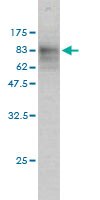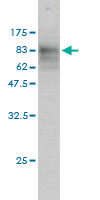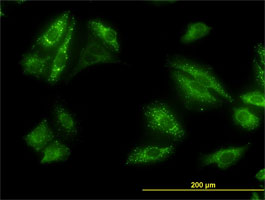DR1057 Sigma-AldrichAnti-SQSTM1 Mouse mAb (2C11)
This Anti-SQSTM1 Mouse mAb (2C11) is validated for use in ELISA, Immunoblotting, Immunocytochemistry for the detection of SQSTM1.
More>> This Anti-SQSTM1 Mouse mAb (2C11) is validated for use in ELISA, Immunoblotting, Immunocytochemistry for the detection of SQSTM1. Less<<Sinonimi: Anti-Sequestosome 1
Prodotti consigliati
Panoramica
| Replacement Information |
|---|
Tabella delle specifiche principali
| Species Reactivity | Host | Antibody Type |
|---|---|---|
| H, M | M | Monoclonal Antibody |
Prezzi e disponibilità
| Numero di catalogo | Disponibilità | Confezionamento | Qtà/conf | Prezzo | Quantità | |
|---|---|---|---|---|---|---|
| DR1057-100UG |
|
100 μg |
|
— |
| Product Information | |
|---|---|
| Form | Liquid |
| Formulation | In PBS, pH 7.2. |
| Positive control | HeLa cells |
| Preservative | None |
| Quality Level | MQ100 |
| Physicochemical Information |
|---|
| Dimensions |
|---|
| Materials Information |
|---|
| Toxicological Information |
|---|
| Safety Information according to GHS |
|---|
| Safety Information |
|---|
| Product Usage Statements |
|---|
| Packaging Information |
|---|
| Transport Information |
|---|
| Supplemental Information |
|---|
| Specifications |
|---|
| Global Trade Item Number | |
|---|---|
| Numero di catalogo | GTIN |
| DR1057-100UG | 04055977226010 |
Documentation
Anti-SQSTM1 Mouse mAb (2C11) MSDS
| Titolo |
|---|
Riferimenti bibliografici
| Panoramica delle referenze |
|---|
| Lee, H,K., et al. 2010. Immunity. 32, 227. Bjorkoy, G., et al. 2009. Methods Enzymol. 452, 181. Ferguson, C,J., Lenk, G,M., and Meisler, M,H., Hum. Mol. Genet. 18 4868. Gal, J., et al. 2009. J. Neurochem. 111 1062. Mardakheh, F,K., et al. 2009.J. Cell Biol. 187, 265. Jung, H,S., et al. 2008. Cell Metab. 8, 318. |















